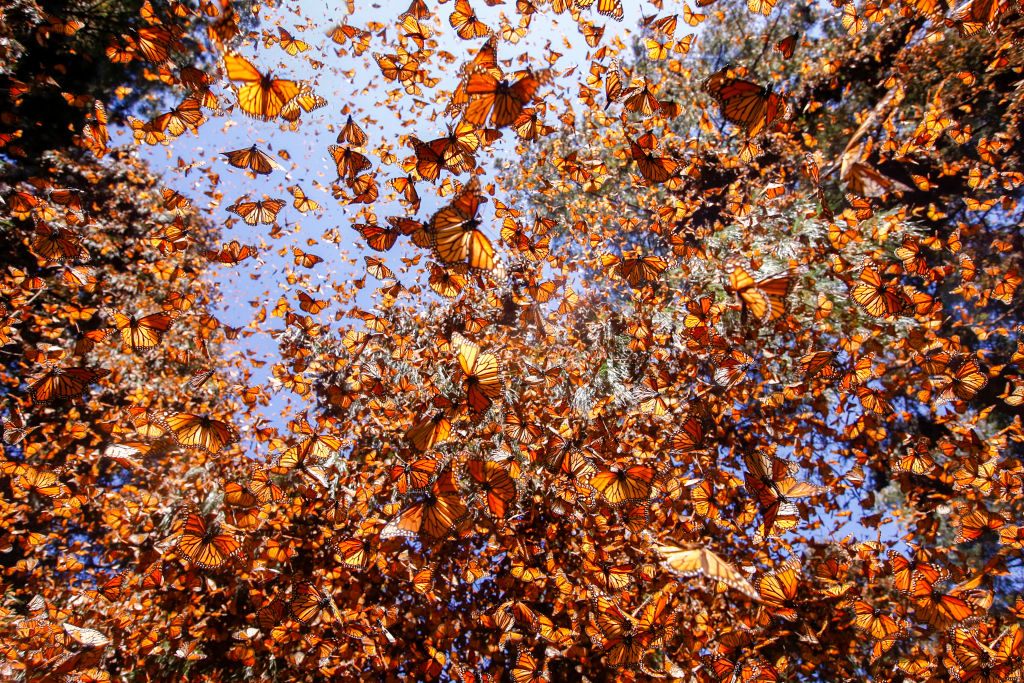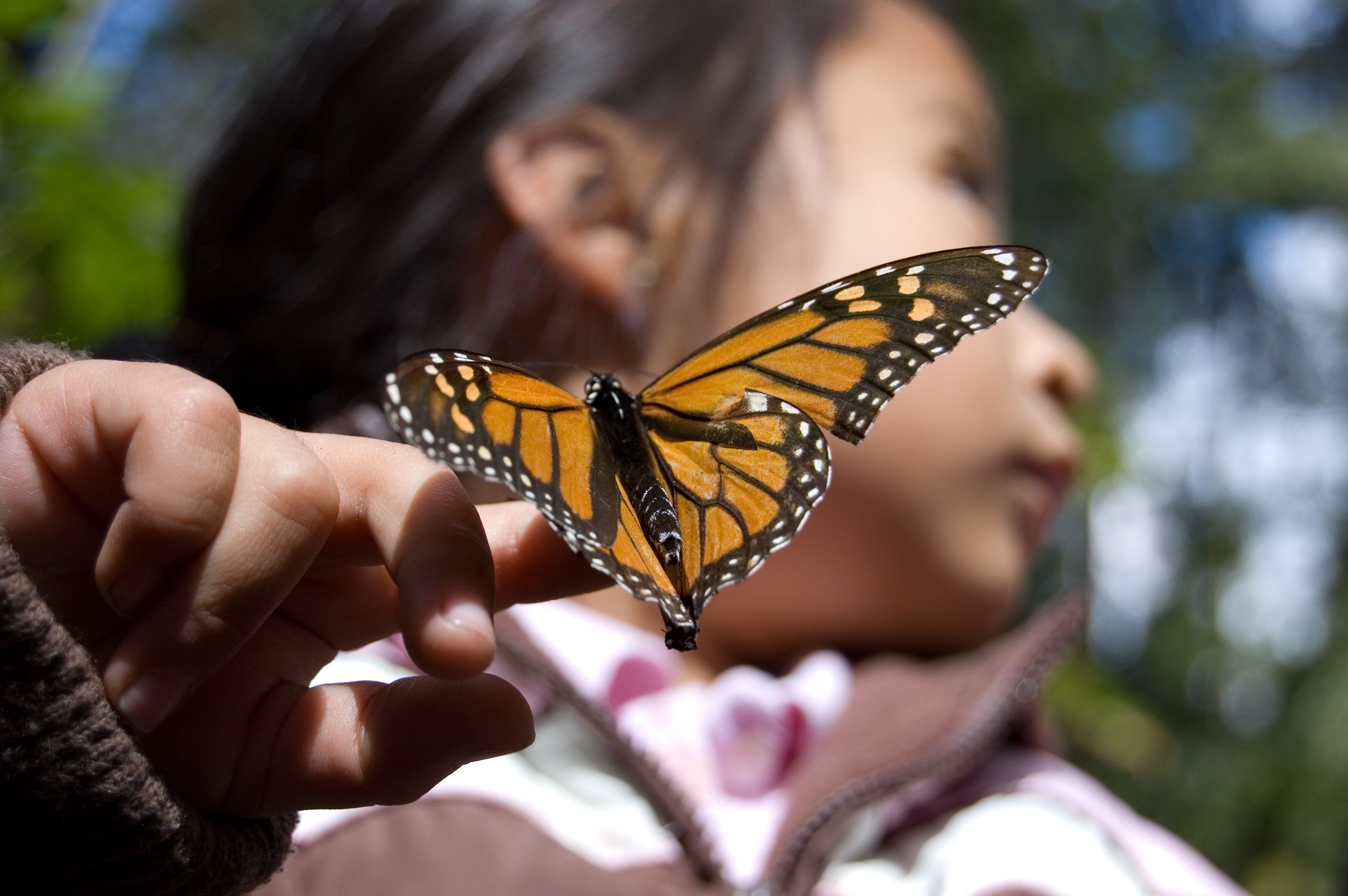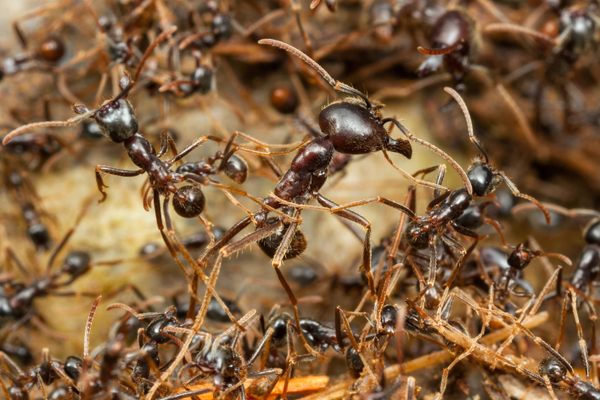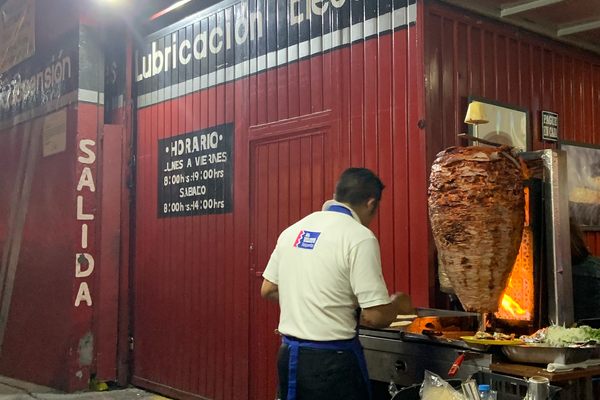The Tiny Sticker That Traveled More Than a Thousand Miles on the Wing of a Butterfly
Tracking these insects takes a little adhesive and a lot of luck.

In the montane forest of central Mexico, the butterflies are everywhere. At the right time of year, they twirl in the air like scraps of confetti. The sound of millions of pairs of wings reminds some listeners of the patter of rain. They come to roost on the feathery oyamel or sacred fir trees, turning green boughs black and orange, and making them sag toward the ground. Sometimes the butterflies cluster on the floor of the forest, where they nectar on colorful flowers. They gather there in death, too.
By the time the monarch butterflies have completed their continent-spanning migration at El Rosario butterfly sanctuary, part of Mexico’s Monarch Butterfly Biosphere Reserve, the weary travelers have often journeyed several thousand miles, from the Eastern United States and Canada. Each autumn, the reserve welcomes hundreds of millions of them, plus the human visitors who come to marvel at the spectacle. The butterflies will spend the winter there before returning north. It takes several generations for them to make the round trip: Their great-great-grandchildren are the ones who will make it back to this same spot the following year, sometimes even settling in the same trees.

Since the 1990s, researchers at Monarch Watch, a project out of the University of Kansas, have doled out tiny stickers—each marked with an email address, phone number, and unique identification code—and asked citizen scientists and other volunteers to adhere them to the discal cell on butterflies’ wings. When they apply these lightweight additions, the volunteers record the code and the location. If the tags are ever spotted again, the data help the researchers figure out where the butterflies had been.
Travelers on a recent Atlas Obscura trip to El Rosario improbably came across one of these stickers, and helped reconstruct a journey of hundreds and hundreds of miles. The group had ventured into the mountain forest, some on foot and others on horseback. When the weather turned dodgy, they waited out the rain as the butterflies hunkered down in the trees. The group even saw some die as they were struck by hailstones. The weather cleared, the butterflies began moving again, and the travelers continued on. Amid the millions of butterflies—millions alive, millions dead—a local guide spotted one sporting a white dot.

This, of course, is exactly how the program was designed to work. But there’s something that feels almost miraculous about it all—that some of the butterflies make it south, through wind and rain and birds, to gather in such a dazzling, dizzying fashion, and that a tag peeks out at someone scanning the riot of ochre and green and black. “Blows my mind that we saw one,” says Jason Goldman, a science journalist and one of the leaders of the trip.
Goldman and his fellow trip leader, biologist Phil Torres, reached out to Monarch Watch and the University of Kansas to report the find. Based on the code on the sticker, Monarch Watch determined that the butterfly had been tagged in Northfield, Minnesota—roughly 1,800 miles away.
That’s where a local woman named Julianne Moore last saw it in September 2018, her second year of tagging butterflies in her backyard. Growing up as a city kid in Minneapolis, “worms were icky,” she says. “I hated bugs.” But her mother was a gardener, and Moore began sinking her hands into the soil, too.

Several years ago, she saw a butterfly emerge from a chrysalis while she was hosting a garage sale. Soon after, she moved the daylilies she’d salvaged from her mother’s garden to make room for a patch of milkweed. Before long, she was even ushering caterpillars into little screened habitats, where they could safely complete their metamorphosis and emerge from a chrysalis, wet and vulnerable. Once they’re dry, she takes them out, holds them gently by the wings, and applies a sticker. (Her grandson gifted her a magnifying glass to assist in the delicate work.) “Then I set them on some flowers around the deck,” she says. “They sit out there for a while, and off they go.”
Moore spotted a picture of the recovered butterfly when Torres shared it on Twitter. She was excited to see that the creature had finished its trek. It was the second she reared that she knows made it to El Rosario, but there’s been no sign of the other 99 she tagged in 2018. “I’m greedy enough that I’m hoping that when the rest of the reports come out, [there] may be more,” she says. The list of recovered tags will soon be published on the Monarch Watch website—around the same time that Moore completes the second leg of her own annual migration, returning north from Florida, where she spends the winter and hands out milkweed seeds to her neighbors. She hopes to visit the Mexico reserves in the winter of 2020.
The fact that this migration exists at all is incredible, and finding a single butterfly carrying proof that it made the journey from one end to the other, even more so. Over the past two decades, Monarch Watch tags have been affixed to roughly 1.4 million butterflies, just a sliver of the overall cohort that makes the trip. Many don’t get tags, and many with them die along the way. Even among those tags carried all the way to Mexico, the odds of a visitor observing one are vanishingly small. “You have to spot one with a tag out of the millions of living and dead butterflies in visual range, which of course doesn’t include those that are too high, or buried beneath other dead ones, or perhaps dead but with the tag on the face-down side, or clustered on a tree not in visual range of the trails you’re allowed to be on,” says Goldman. Of the 1.4 million tags, only around 14,000 tags have ever been seen again—just one-tenth of one percent. Spotting one is like finding a needle in a haystack the size of a forest.




























Follow us on Twitter to get the latest on the world's hidden wonders.
Like us on Facebook to get the latest on the world's hidden wonders.
Follow us on Twitter Like us on Facebook